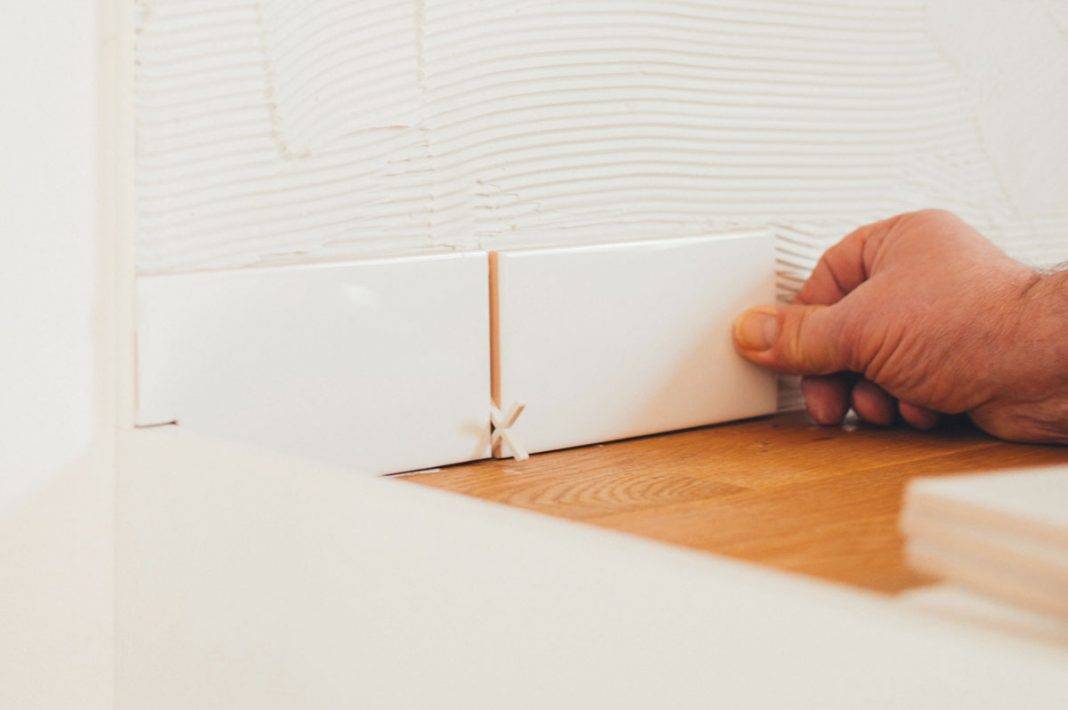Steve Davidson, from online trade supplies retailer U-PRO, shares his advice on choosing the right adhesive and grout for ceramic tiles.
Picture this: a customer has chosen a high end, immaculate looking ceramic white wall tile for their hallway or kitchen and now it’s your job to make it look like it does in the Pinterest photo. A challenge you might have already encountered.
Ceramic tiles are probably the most popular choice for tiling kitchen and bathroom walls, but with so many options, and associated adhesives available in today’s market, how do you know that you’re choosing the best possible option for your customer’s ceramic wall tiles?”
When laying ceramic tiles, the first thing we must think about is what’s needed to firmly stick the tile to the surface. After all, a durable, solid finish is key. Your customer will be investing heavily into their ceramic tile wall so they need to be confident it will last. The adhesive used will be as vital as the colour, shape and quality of the tile chosen.
Before any decision is made, you need to check the substrate the tiles will be laid on and attached to. What is it made of? Is it concrete, metal or wood, for example? Is it porous or absorbent? This all matters when deciding on the right adhesive to turn to.
Where are the tiles being fixed? And how flexible and resilient must the adhesive be? Walls require vertical bonding, so a quicker drying adhesive is favourable. Whereas, when laying ceramic tiles on floors, you have to think about the air movement and availability as most adhesives need air to cure.
You also need to know what the adhesive will come up against, for instance, water, sunlight, humidity, and even mould.
There are so many different adhesives to choose from and selecting the wrong one can cause significant cost issues later down the line, so it’s vital to make the right decision right at the start of the installation process.
The waterproof Evo-Stik wall tile adhesive is the most popular choice for kitchens, shower walls and bathrooms as it bonds to most sound interior surfaces such as existing tiles, cement, plaster, rendering, plywood, plasterboard, blockboard, wood chipboard, glazed bricks and painted surfaces.
Another key factor in laying a perfectly tiled ceramic tile wall is the grout. Picking out a tile colour, pattern, shape, and layout is the exciting part of tile design, but all too often we forget about an equally important design element: the grout.
The sole purpose of the grout is to ensure the tiles stay in the place they’re laid and to create a watertight seal so that nothing can get in between the tiles or under them, causing movement issues.
Choosing the right grout depends on the type of tile, its colour and texture, and the width of the gap between the tiles when fixed in place.
The Evo-Stik wall tile grout is well-liked, not only for ceramic wall tiles but also for stone and porcelain use, because it is a fast setting, mould resistant, waterproof and can be used for both interior and exterior.
Online retailing has opened the world up to more choice, more knowledge and more opportunity to get the right tools and the right products for the job at hand. Before choosing an adhesive and grout to lay ceramic tiles, it’s vital that you do your homework.
Don’t be afraid to ask the retailer or manufacturer questions that are specific to the tiles you are fitting. Remember, they’ll likely need to remain in place for a considerable length of time in good condition so any product used to achieve this must be high quality, durable and resilient.
www.u-pro.co.uk









